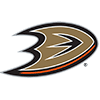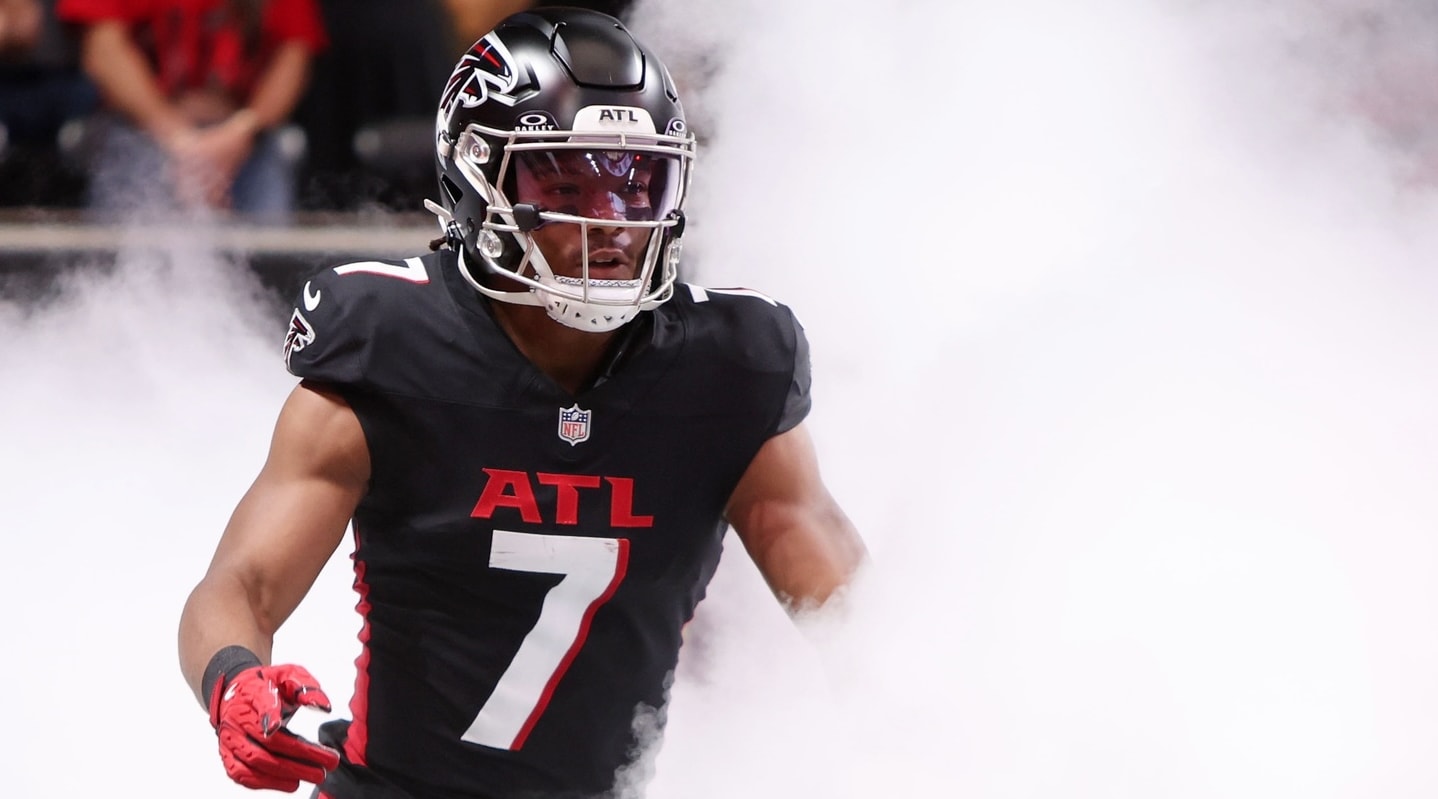DeVonta Smith just won the Heisman Trophy as a wide receiver, a distinction that will permanently place his name alongside the best players in college football history. Soon he'll be a first-round pick in the NFL Draft, perhaps quite high in the order. His stock is at no risk of falling anytime soon.
Despite his strong brand in the mainstream, though, there's a surprisingly persistent swell of criticism toward Smith in certain corners of online NFL Draft and dynasty football communities. These critics aren't unreasonable in their concerns, which tend to focus on past NFL outcomes relating to details of age (Smith will be 23 in November – older than most top prospects) and especially his skinny 6-foot-1, 175-pound listed frame. There are objective negative trends to observe in players of Smith's age and frame range, especially when you're talking a first-round cost.
Outcome trends aren't the same as outcome certainties, however, and the peripheral details here make a compelling argument that Smith should be considered a likely exception to the previously mentioned trends. To be clear, even though I'm sold on Smith my position is the moderate one – Ja'Marr Chase is still my WR1 by a safe margin, and I even still rank Jaylen Waddle ahead of Smith, who's my WR3 at the moment. All three players are top-15 type talents to me, though, so the following is mostly meant to push back against Smith's critics more than it's meant to co-sign anything from Smith's most aggressive proponents.
Age
Age is not a concern of any sort in Smith's case. Age absolutely matters for draft prospect evaluation, but to mark Smith as one of its concerning examples is a misapplication. His production passes the age test because his production can't be explained by his age.
Age matters in prospect evaluation because it affects the meaning value of a player's production. You simply grade older prospects on a harsher curve, and you grade younger prospects on a more lenient curve. The sliding scale is crucial – I see some people drawing red lines where any player over X years old at Week 1 of their rookie season is ruled out of consideration, and to me that's insane. An older player can still be good as a prospect, they just need to prove it by dominating more than their younger peers.
Chase Claypool and Miles Boykin at Notre Dame are a good recent example of where age-adjusted production gave us fair warning as to which player was good and which wasn't. It'd be understandable if someone had been unable to make a meaningful distinction between the prospects given their size/athleticism similarities otherwise, but their age-adjusted production implied a diverging path all along.
Boykin served as Notre Dame's WR1 in 2018 over Claypool only for age-related reasons. Boykin turned 22 that October and caught 59 of 100 targets for 872 yards and eight touchdowns – decent enough numbers – but at 21 years old the year prior Boykin (12 catches for 253 yards and two touchdowns on 19 targets) actually played as backup to not just Claypool (29 receptions for 402 yards and two touchdowns on 46 targets) but also Equanimeous St. Brown and Kevin Stepherson. Boykin's age-20 season in 2017 was similarly brutal – he drew just nine targets that year while St. Brown, who's only two weeks older than Boykin, caught 58 of 93 targets for 961 yards and nine touchdowns. Unlike Smith at Alabama, Boykin was incapable of earning playing time until he was nearly 22, meaning it was age advantage rather than talent that allowed him to outproduce Claypool in 2018. Boykin has no such age advantage in the NFL, so that's a viable explanation for his struggles.
It's true to say that Smith's 2020 production gets a penalty for his advanced age at nearly 22 – most fourth-year players enter the season around age 21 – but it's also true that he produced at a level that can easily afford to incur that penalty. Smith wasn't just some general form of dominant in 2020, he was singularly great – 117 receptions for 1,856 yards and 23 touchdowns on 147 targets in 13 games is preposterous. Each additional detail only adds to the absurdity: Smith caught 79.6 percent of his targets at 12.6 yards per target, in an offense that completed 76.2 percent of its passes at 11.0 YPA. Smith provided efficiency far above his team's already high baseline, and on burdensome volume – Smith provided 39.9 percent of Alabama's receiving yardage and more than half of their touchdowns. You can apply the harshest penalties to these numbers and they still grade at elite levels.
Let's assume for a minute that Smith's 2020 was somehow the product of his age. Observing this premise become difficult as you look into Smith's younger seasons, none of which suffered lagging production. If Smith's advanced age explains his 2020 production, then what explains the fact that he produced above baseline in 2018 and 2019, in an offense that featured not just Waddle but Jerry Jeudy, Henry Ruggs and Irv Smith? Over those two years Smith caught 73.3 percent of his targets at 13.0 yards per target while scoring 20 touchdowns on just 110 catches. Alabama completed 69.8 percent of its passes at 11.1 YPA in that span. At ages 20 and 21, Smith outplayed the very high Alabama baseline as he competed with three first-round pick wide receivers and a second-round pick pass-catching tight end.
Is Calvin Ridley good enough for you? He carried a 35.7 percent share of Alabama's team receiving yardage in 2018 – a season where he turned 23 in December – and outplayed the Alabama baseline by smaller margins (0.4 catch percentage, 1.3 yards) than Smith did (2.6 catch percentage, 1.6 yards) at age 22 with a 39.9 percent yardage share. If Ridley is a good NFL receiver and produced worse at a year older than Smith in their respective final seasons, then Smith's odds can't be too bad.
Frame
Whereas there's no coherent concern to express regarding Smith's age, his frame is a more legitimate worry. Not even the Calvin Ridley example can effectively absolve Smith – Ridley checked in at a whopping 189 pounds!
There's no doubt about it, Smith's listed frame of 6-1, 175 is skinny. Problematically skinny. A skinny receiver can still succeed and a dense receiver is assured nothing, but all else being equal we want plus density in any player. Anchor ability and standout momentum are desirable traits for standard football functions, including those of receivers. The denser a receiver is the more likely they are to withstand physical force, which is especially important if the receiver plans to go over the middle or otherwise make catches in traffic. Football is basically a game of leverage, and things like anchor and reach are how its expressed in space. As much as Smith's production makes a compelling illustration of his skills, skill can only manifest in on-field success if a player has the physical tools to apply those skills. Skill set and tool set both matter, though the more you have of one the less you generally need of the other.
If Calvin Ridley is the pro-Smith case study to focus on, then the anti-Smith reasoning might focus on recent cases like Paul Richardson and Dede Westbrook. Both players were highly productive college receivers, including at an early age in Richardson's case, and both players possess 4.40 speed, which is conventionally regarded as very good. And yet, their NFL production has been rather lackluster, and among peers with similar college production and athletic testing, the only distinction between them and the good-case outcomes is the fact that Richardson (6-0 3/8, 175) and Westbrook (5-11 5/8, 178) are both skinny for their height. Were Richardson and Westbrook disappointing because they fell short of some magic threshold of weight to height, a threshold that would have granted them stardom had they reached it? Doubtful, but it's also true that their inadequacies were likely informed by the fact that their builds are more typical of a point guard than a football player of any particular position, and Smith very likely has a frame similar to theirs.
NFL Projection
If Richardson and Westbrook disappointed as NFL players in part due to their frame and Smith has a similar frame, then as stated that's a pretty big problem for Smith's NFL projection, especially those of high expectation. As previously mentioned, though, the skill set and the tool set both matter, and a deficiency with the tool set (frame and athleticism) can be mitigated or overruled by skill set, and vice versa.
One way for Smith to mitigate his frame deficiency would be to test with better athleticism than Westbrook or Richardson did, which is to say sub-4.4 speed and jumps to the tune of 40 inches in the vertical and 130 inches in the broad jump. While it's possible that Smith does exactly that, those are high bars to clear and we shouldn't get our hopes up for that specific outcome.
If not on the basis of physical traits then Smith will need to distinguish himself from the Richardsons and Westbrooks on the basis of skill. Unlike athleticism we can't gauge this on an objective basis, but the contextual details in this case outline results that can only reasonably be attributed to skill. Even with this hindrance of a frame, Smith has outplayed prospects on the same team who have already found NFL success. The cases of Richardson and Westbrook, cautionary as they might be for prospects with similar frames, don't truly compare to Smith in the sense of production value.
Richardson and Westbrook were very productive yes, but 'very productive' still falls short of whatever category we'd like to call Smith's production. Richardson's biggest competition was Nelson Spruce, while Westbrook was only a 700-yard player at Oklahoma until Sterling Shepard went pro. In Westbrook's one huge season at Oklahoma he was a year older than Smith was in 2020, and Westbrook got shut down against Ohio State's Marshon Lattimore-led corner rotation that year. Smith's one dud in 2020 was in a 52-3 blowout against Arkansas, and Smith at least managed to return a punt for a touchdown in that one.
The frame concern with Smith is valid, but unless he tests poorly its takeaway is likely limited. Rather than a career-dooming deficiency, it would be more reasonable to simply look at it as the basis for ranking him behind Chase, who matches Smith's on-field dominance but did so at a younger age and with a much heavier frame. You could even go a step further like I do and use it as the basis to rank Smith behind Waddle, especially if we agree that Waddle looks like the faster of the two. But it would be wrong to say that Smith's frame dooms him to some generalized failure – a Smith critic who compares him to Westbrook or Richardson reaches as desperately as the Smith superfan who declares him Marvin Harrison in response.

























